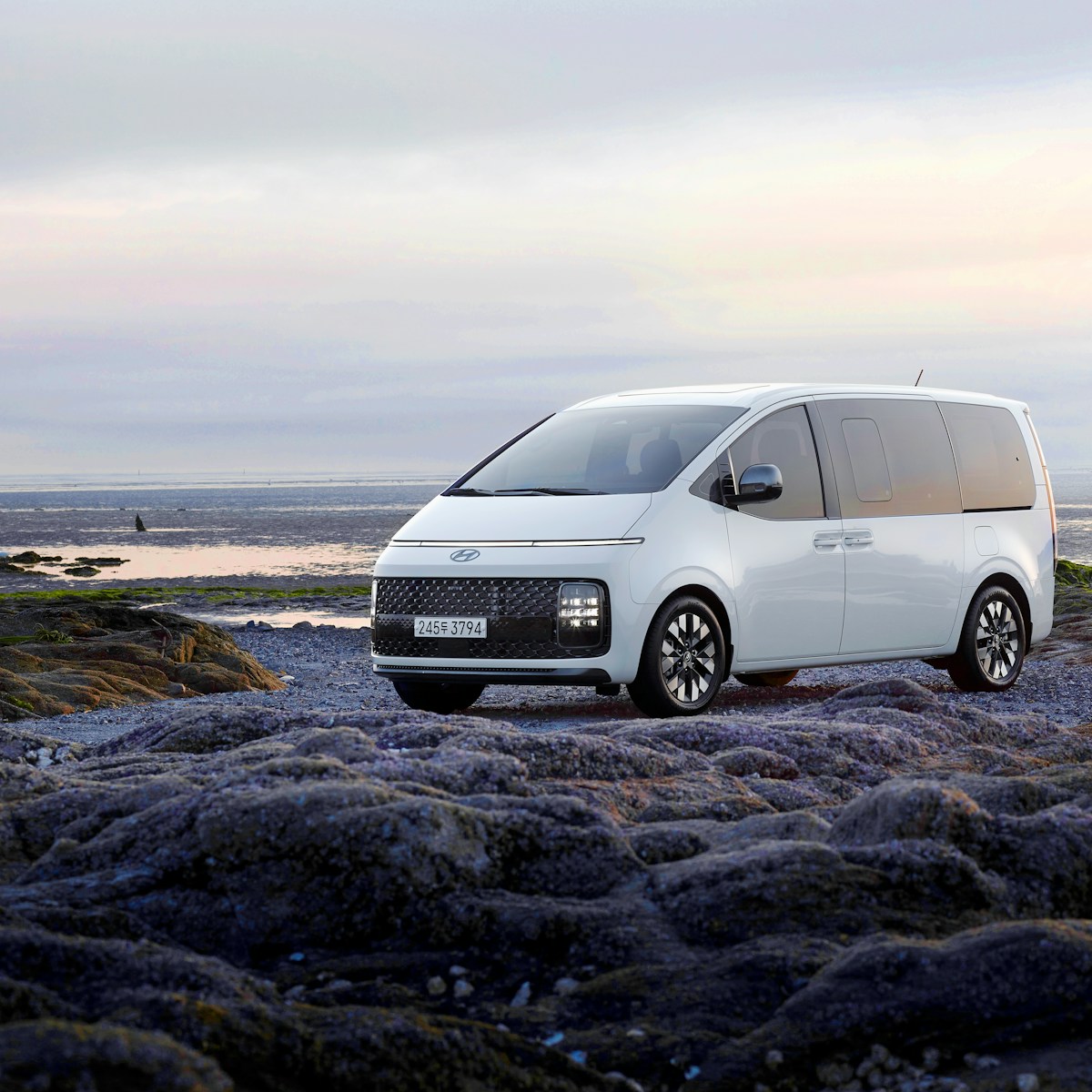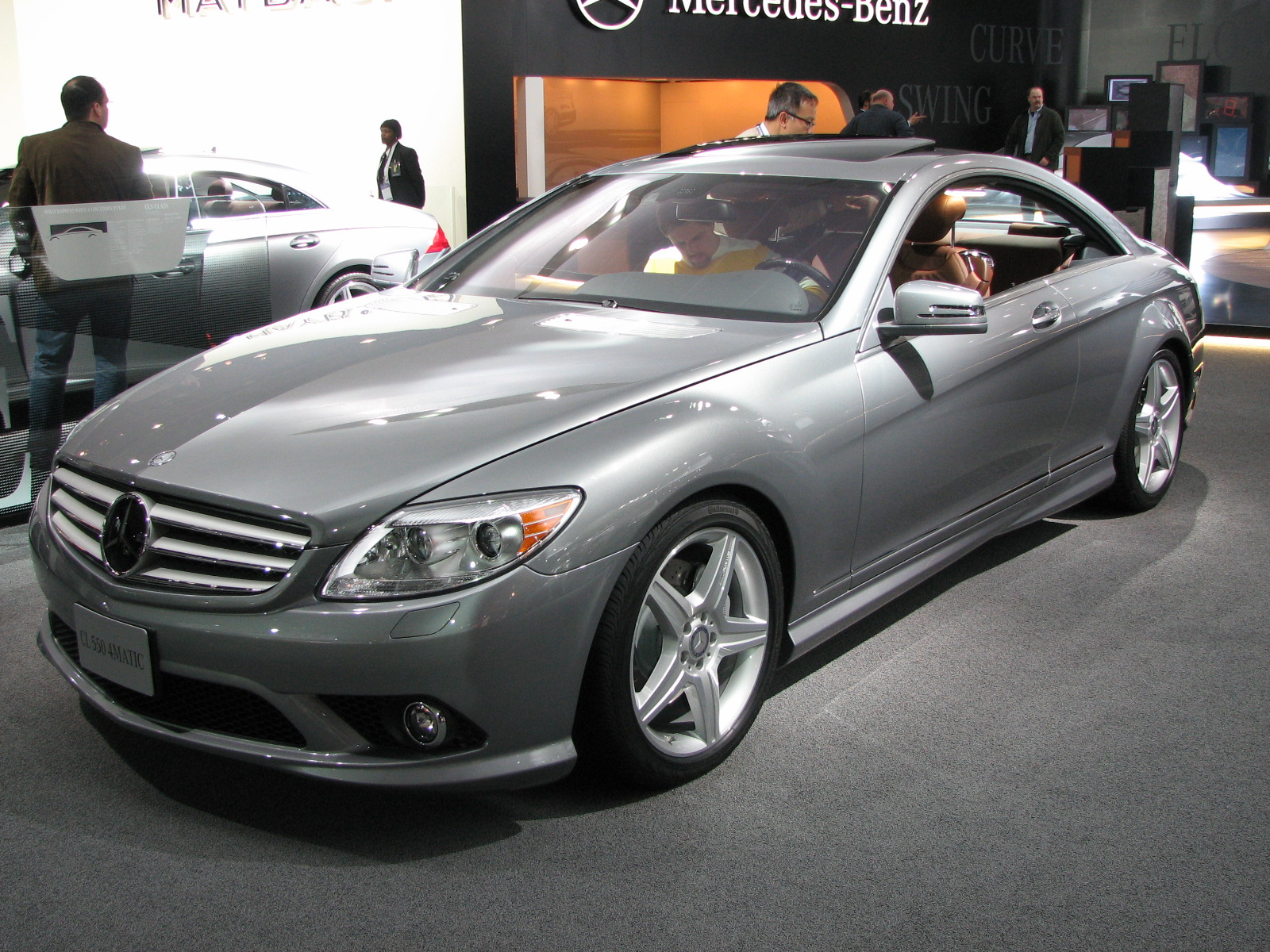
For many drivers, especially those who rely on their vehicle for daily commutes, business, or long-distance travel, engine longevity is a top concern. Buying a car, whether new or used, represents a significant investment, and understanding its long-term reliability is crucial. While factors like brand reputation and consistent maintenance contribute to a vehicle’s lifespan, the engine remains the heart of its durability.
Reaching the significant milestone of 300,000 miles is no easy feat for any engine, and it’s not just about the engine surviving; it’s about how well it performs when it gets there. There’s a common misconception that once a car crosses the 200,000-mile mark, it becomes unreliable or starts losing significant performance. However, this is not a universal rule.
Some engines defy this expectation, not only reaching that milestone but continuing to deliver consistent power, decent fuel efficiency, and a smooth driving experience as the odometer climbs. They stay strong, resist wear, and perform like they’re barely broken in. Their success stems from engineering simplicity, robust materials, low-stress operation, and a remarkable ability to resist internal wear. These powerplants are designed to keep going without breaking down, with track records showing cars easily pushing past 300,000 miles without losing performance.

1. **Toyota 2UZ-FE 4.7L V8**The Toyota 2UZ-FE 4.7L V8 is a cast-iron block engine known for its reliability and strength for decades. Found in vehicles like the Toyota Land Cruiser, Sequoia, and Tundra, it was designed for durability. Unlike many modern aluminum-block engines, the 2UZ-FE features a traditional cast-iron block paired with aluminum heads. This combination offers strong lower-end durability and lighter top-end weight. While not the most fuel-efficient, its core purpose was longevity, consistent torque, and reliability in all conditions.
A key advantage of the 2UZ-FE is its conservative tuning. This engine isn’t pushed to its limits in terms of horsepower or compression. It produces respectable torque and horsepower at low RPMs, reducing stress on internal components. The timing belt-driven overhead cam system is relatively simple to maintain, with regular belt changes greatly preserving engine life. Furthermore, it avoids common oil burning or head gasket issues seen in some other V8s, simply performing reliably mile after mile.
Owners consistently report the 2UZ-FE feels as strong at 250,000 miles as it did at 50,000. This power retention isn’t coincidental; it results from overbuilt internals, quality manufacturing, and smart design. Even under towing or off-road stress, the engine holds up exceptionally well compared to others in its class. Its widespread use across many platforms also ensures parts availability is never a concern.
Beyond its longevity, the engine’s consistent performance garners praise, as it doesn’t become sluggish or weak over time. With regular oil changes, cooling system maintenance, and attention to timing components, the 2UZ-FE can remain strong well into and beyond the 300,000-mile range. This makes it one of the most respected long-life engines ever built.
Read more about: Unstoppable Powerhouses: 14 Legendary Engines That Defy Time and Deliver Endless Miles
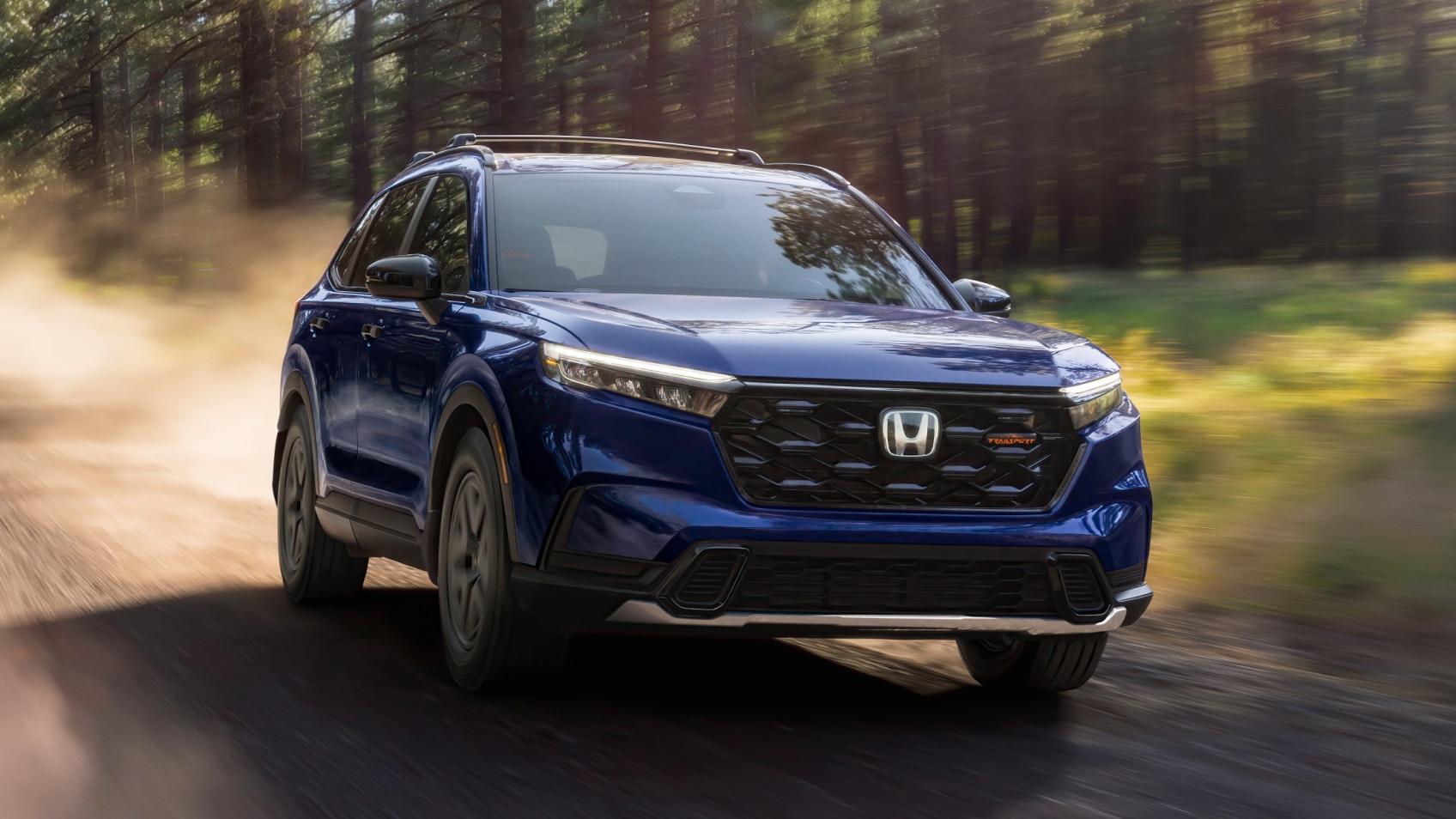
2. **Honda K24 2.4L Inline-4**The Honda K24 engine is one of the most admired four-cylinder engines in recent memory. Introduced in the early 2000s, this engine found its way into a variety of Honda and Acura models, including the Accord, CR-V, Element, and TSX. What makes the K24 so special isn’t just its longevity, but also how well it maintains its output over time. Even as the miles stack up, these engines tend to remain smooth, responsive, and surprisingly strong. It’s not unusual to see a well-maintained K24 running like new with over 300,000 miles on the clock.
At the core of its success is intelligent design. The K24 features an aluminum block with cast iron cylinder liners and a forged steel crankshaft, balancing light weight and strength. Its valvetrain includes Honda’s i-VTEC system, optimizing performance and efficiency based on RPM and load. Despite its complexity on paper, it has proven extremely reliable in real-world use. This blend of technology and durability earned the K24 a reputation for being both dependable and engaging to drive.
Another strength of the K24 is its thermal efficiency and oil management. It’s known for clean combustion, low oil consumption, and minimal carbon buildup with proper maintenance. Avoiding turbocharging, direct injection, or other high-stress systems reduces wear and potential reliability issues over time. This positions the K24 as a solid candidate for long-term ownership, minimizing fear of major repairs.
Owners often note that their K24-powered vehicles still have plenty of power and throttle response even at high mileage. The engine doesn’t feel tired or sluggish, and it continues to return decent fuel economy. With basic maintenance like oil changes, valve adjustments, and cooling system care, the K24 can go the distance while still performing close to factory spec. That’s rare for any engine, let alone one in this price range and vehicle class.

3. **Ford 4.6L Modular V8**Ford’s 4.6L Modular V8 found widespread use in vehicles from Crown Victorias to F-150s and Explorers. Introduced in the early 1990s, it rapidly gained a reputation for strength and longevity. Unlike older pushrod V8s, the 4.6L uses SOHC or DOHC designs. This modular family was engineered for longevity, featuring aluminum heads and blocks in most versions, with a low-stress design enabling smooth operation for hundreds of thousands of miles.
One of the key features of the 4.6L Modular engine is its strong bottom end. It isn’t a high-revving powerhouse, but it delivers smooth, usable torque across the RPM range. The oiling system is well-designed, and with regular maintenance, these engines can go 300,000 miles or more without needing a rebuild. Law enforcement and taxi fleets heavily used and favored these engines for their exceptional abuse tolerance.
Despite its relatively simple architecture, the 4.6L offers decent performance that degrades minimally over time. It operates quietly and smoothly, boasting consistent combustion and solid internals. Early spark plug designs had issues, but later models improved with redesigned heads. The engine’s timing chain system, though more complex than a timing belt, offers greater durability with proper maintenance.
Owners frequently report that even after 250,000 or 300,000 miles, the engine starts reliably, doesn’t burn excessive oil, and still accelerates confidently. This indicates a well-built powerplant designed with inherent durability. It may not be flashy, but its trustworthiness is precisely what many long-term owners seek.
Car Model Information: 2020 Hyundai PALISADE SEL
1: Lincoln Continental Mark VI
2: Lincoln Town Car
3: Mercury Grand Marquis
4: Mercury Marauder
5: Ford Crown Victoria Police Interceptor
Name: Ford Panther platform
Manufacturer: Ford Motor Company
Assembly: Talbotville, Ontario
Production: 1978–2011
Predecessor: Ford LTD (Americas)#Second generation (1969–1978)
Successor: Ford D3 platform
Class: Full-size car,Car classification#Full-size luxury,Personal luxury car,Limousine
Layout: FR layout,body-on-frame
BodyStyle: 2-door sedan (1979–1987),4-door sedan (1979–2012),5-door station wagon (1979–1991)
Engine: Ford Windsor engine#255
Wheelbase: convert
Vehicles: collapsible list
Title: Continental models
Caption: 2000 Lincoln Town Car Signature Series
Categories: 1970s cars, 1980s cars, 1990s cars, 2000s cars, 2010s cars
Summary: The Ford Panther platform was an automobile platform that was used by Ford Motor Company from the 1979 to 2012 model years. Following the downsizing of the General Motors B-bodies and C-bodies by two years, the Panther platform marked the end of production of full-sized American sedans. Originally slated for discontinuation during the early 1980s, the Panther architecture was used for 33 model years, making it one of the longest-produced platforms in North American automotive history.
Developed as a successor to the 1969 Ford chassis, the rear-wheel-drive, body-on-frame Panther platform was used by the Ford and Lincoln-Mercury brands. While produced exclusively as four-door sedans from 1992 to 2012, prior to its first update, the chassis underpinned two-door sedans and five-door station wagons. Throughout its entire production life, all Panther-platform vehicles were equipped with a V8 engine; the Modular V8 engine introduced in 1991 was the first overhead-cam V8 engine used in a mass-produced American vehicle.
Initially developed in response to the implementation of CAFE by the U.S. federal government, the Panther platform outlived its closest rival (the 1977–1996 GM B platform) by 15 years, with the 2012 Ford Crown Victoria becoming the final mass-produced passenger car designed with a separate frame. While body-on-frame construction is retained by pickup trucks and larger SUVs, unibody construction (or variants thereof) sees nearly universal use in passenger cars.
From 1978 to 1985, Ford and Mercury versions of the Panther platform were assembled in Hazelwood, Missouri (St. Louis Assembly). For the 1986 model year, production shifted to Talbotville, Ontario, Canada (St. Thomas Assembly). Lincoln versions were sourced from Wixom, Michigan (Wixom Assembly), until its 2007 closure; from 2008 to 2011, the Lincoln Town Car was assembled by St. Thomas Assembly. After a short production run of 2012 vehicles for export, St. Thomas Assembly produced the final Ford Crown Victoria on 15 September 2011, the final vehicle produced by the facility and the final vehicle of the Panther platform.
Get more information about: Ford Panther platform
Buying a high-performing used car >>>
Brand: Ford Model: 4.6L Modular V8
Price: $22,884 Mileage: 82,599 mi.
Read more about: Your Garage, Your Rules: 14 Top Cars for Stress-Free DIY Maintenance

4. **Chevrolet 5.3L Vortec V8**The Chevrolet 5.3L Vortec V8 has served as the workhorse of GM trucks and SUVs for years, appearing in models like the Silverado, Tahoe, Suburban, and some performance applications. This engine skillfully combines old-school American V8 character with modern efficiency and durability. Known for its balance of power and reliability, the 5.3L V8 often keeps pulling strong well past 300,000 miles if properly maintained. It is a respected member of GM’s LS-based small block family, one of the most esteemed engine lineups ever produced.
The 5.3L Vortec distinguishes itself with a relatively simple pushrod design and robust internal components. Most applications feature a cast iron block, though aluminum blocks are also utilized in certain versions, benefiting from decades of refinement. While later models incorporated sequential fuel injection and variable valve timing, even earlier versions are noted for their consistent reliability over the long haul. The cylinder deactivation system (Active Fuel Management) in some versions can be a weak point, leading many owners to disable it for enhanced long-term reliability.
Another significant reason the 5.3L Vortec has garnered such a loyal following is its impressive power retention over time. Even after years of heavy-duty applications like towing and hauling, many of these engines reliably start on the first crank, maintain steady oil pressure, and pull confidently under throttle. It is not uncommon to find trucks with this engine that have outlasted multiple transmissions or chassis rebuilds, while the engine itself continues to run without issue.
Many fleet vehicles and work trucks cross 300,000 miles without requiring internal engine work beyond minor gasket replacements. The block, heads, piston rings, bearings, and valvetrain components hold up remarkably well, wearing slowly with proper maintenance. This durability stems from a relatively low-stress design, prioritizing strong low-end torque and longevity over high RPMs or turbocharged performance, thereby minimizing thermal and mechanical stress on internal components.
Earlier versions of the 5.3L Vortec from the late 1990s and early 2000s remain actively used in fleet vehicles and for heavy-duty tasks. With consistent maintenance—including regular oil changes, coolant flushes, and attention to minor sensor or ignition coil issues—this engine maintains remarkable power and responsiveness. Unlike many engines feeling “worn out” at high mileage, the 5.3L Vortec retains a smooth, predictable, and strong torque delivery, pulling confidently even beyond 200,000 or 300,000 miles. This consistent, unstrained high-mileage performance is a rare and highly valued characteristic.
Read more about: The 15 Unstoppable Trucks: Engineering Excellence That Conquers 300,000 Miles and Beyond
5. **Toyota 1GR-FE 4.0L V6**The Toyota 1GR-FE 4.0L V6 has earned a solid reputation for long-term durability and retained power. Extensively used in Toyota’s truck and SUV lineup—including the Tacoma, 4Runner, and FJ Cruiser—this engine is known for being strong, simple, and nearly unkillable. Built with a deep-skirt aluminum block, cast-iron cylinder liners, and a forged steel crankshaft, it possesses a rugged internal structure vital for high-mileage performance. With regular maintenance, these engines commonly exceed 300,000 miles while maintaining solid compression and power.
What sets the 1GR-FE apart is its utility focus. It was designed to handle off-road abuse, towing, and long-distance highway driving with minimal stress, not for high performance. Original designs used single VVT-i, with later versions introducing dual VVT-i for improved efficiency and power. Regardless of the version, it operates within a balanced performance envelope, producing smooth midrange torque and maintaining drivability even at high mileage. It’s well-suited for both city and rough terrain, a favorite among overlanding enthusiasts.
The engine’s mechanical simplicity also contributes to its longevity. Unlike many modern V6s with direct injection, turbocharging, or complex electronics, the 1GR-FE uses a conservative, time-tested setup. It features port injection, reducing valve carbon buildup, and a robust timing chain over a belt, eliminating a common failure point. Water pump, thermostat, and accessory drive systems are designed for long service intervals. While occasional coil or injector failure can occur with age, core engine components rarely need attention. Many 4Runners and Tacomas still perform like new, even after hundreds of thousands of miles.
Drivers of 1GR-FE powered vehicles often commend its steady feel over time. It avoids rattles, knocking, or sluggish throttle response common in high-mileage powerplants. Instead, it maintains a tight, responsive feel, inspiring confidence. Even at high altitudes or under load, the engine performs consistently, retaining the edge many engines lose with age. This long-term performance, paired with Toyota’s reputation, makes the 1GR-FE a globally trusted V6 for retaining power beyond 300,000 miles.
Continuing our exploration into the powerplants that defy conventional expectations, this section delves into five more engines renowned for their extraordinary durability and ability to maintain performance well beyond the 300,000-mile threshold. These engines, too, stand as testaments to superior engineering and design choices that prioritize longevity, ensuring consumers can confidently rely on their vehicles for hundreds of thousands of miles. Their consistent performance and reliability offer invaluable insights for anyone prioritizing long-term vehicle ownership.
Read more about: Unstoppable Powerhouses: 14 Legendary Engines That Defy Time and Deliver Endless Miles

6. **Mercedes-Benz OM617 3.0L I5 Diesel**The Mercedes-Benz OM617 diesel engine has earned a reputation as one of the most legendary and long-lasting powerplants ever produced. This 3.0L inline-five turbo diesel was widely utilized in various Mercedes vehicles from the late 1970s through the mid-1980s, primarily in the 300D and 300SD sedans. Remarkable for its enduring performance, many of these engines continue to operate robustly today, with odometers frequently displaying mileage figures well beyond 500,000 miles. For the OM617, reaching 300,000 miles is not merely an achievement but an expected milestone, often accomplished without any significant degradation in torque or drivability.
A key factor contributing to the OM617’s exceptional robustness is its fundamentally mechanical design. This engine features mechanical fuel injection, a heavy-duty cast iron block, a durable cast iron head, and minimal electronic components. Such a straightforward design inherently reduces potential points of failure, and the existing components are generally over-engineered to withstand immense stress. Furthermore, the engine is specifically engineered to operate at lower RPMs while delivering high torque outputs, a characteristic that significantly enhances its mechanical stability and overall lifespan. While it may not offer rapid acceleration by modern standards, its strength lies in unparalleled consistency.
These engines are renowned for their impressive tolerance to wear and abuse, which has garnered them a near-mythical status within diesel automotive communities. Many owners have reported that the OM617 engine actually seems to ‘loosen up’ and performs even better after its initial 100,000 miles, indicating how its internal components settle into an optimal operational rhythm. Perhaps the most impressive aspect of the OM617’s longevity is its remarkable ability to retain both torque and overall drivability. Decades after their manufacture, these engines remain fully capable of tackling steep inclines, undertaking long-distance journeys, and performing reliably in challenging cold climates. Their capacity to sustain power under both load and age is almost unparalleled.
Consequently, the Mercedes-Benz OM617 is still highly sought after in the used vehicle market. It appeals to dedicated diesel enthusiasts and individuals looking to convert vehicles for alternative fuels like biodiesel. If the objective is to find a classic engine that can demonstrably outlast almost any other while consistently delivering predictable and strong performance, the OM617 truly stands in a category of its own, representing a pinnacle of enduring automotive engineering.
Read more about: Beyond the Benchmark: 10 Long-Haul Diesels That Redefine Durability, Clocking Over 400,000 Miles Before Retirement
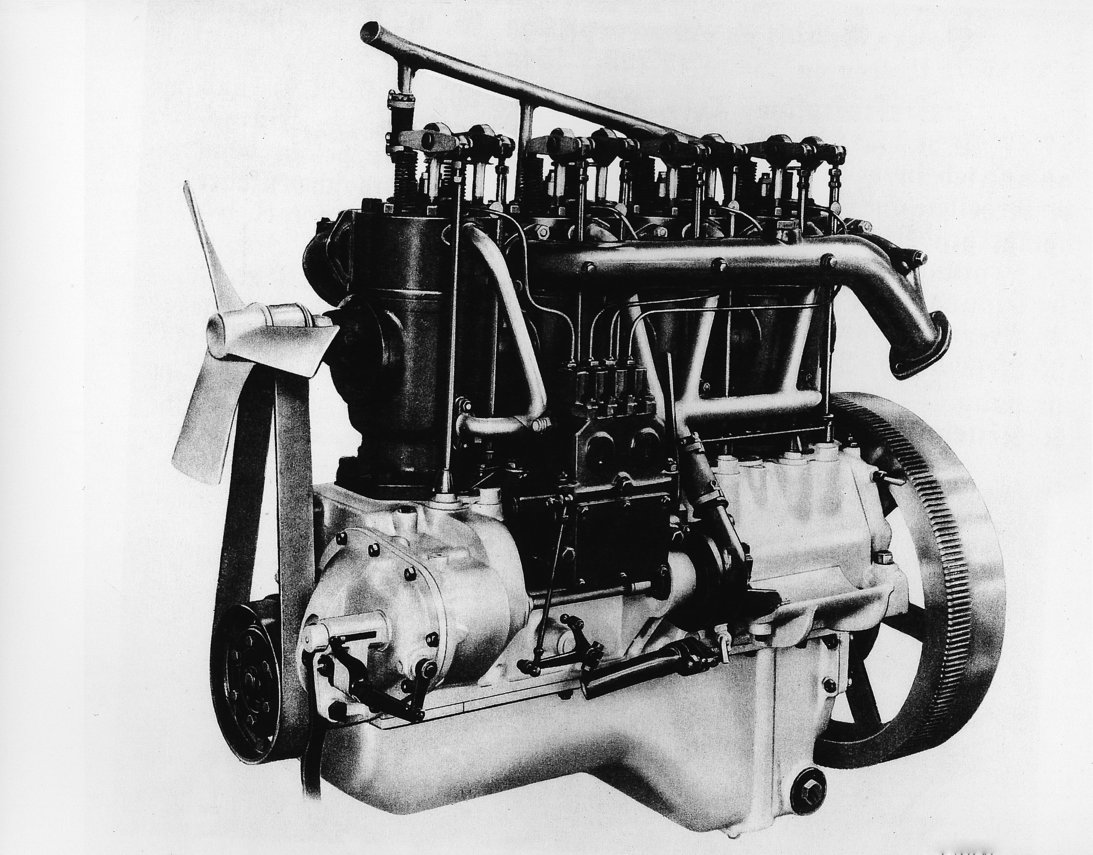
7. **Cummins 5.9L 12-Valve Diesel (6BT)**The Cummins 5.9L 12-valve diesel engine, widely recognized as the “6BT,” holds a prestigious position as one of the most revered diesel engines in the history of truck manufacturing. Initially integrated into Dodge Ram pickups during the late 1980s, this formidable straight-six engine was originally conceptualized and developed for strenuous commercial and industrial applications. This robust heritage is evident in its exceptional build quality, featuring a resilient cast iron block and head, a direct mechanical fuel injection system, and a gear-driven camshaft. These design characteristics collectively contribute to its reputation for being nearly indestructible, making it a cornerstone of heavy-duty reliability.
A defining attribute of the 6BT is not merely its capacity for seemingly endless operation, but fundamentally how it sustains its power output over extended periods of use. Unlike many gasoline engines that often experience a decline in performance with age, the 6BT exhibits a unique tendency to become more efficient and run smoother the longer it operates, provided it receives appropriate maintenance. Owners of high-mileage trucks equipped with the 6BT frequently attest that the engine’s performance at 350,000 miles feels indistinguishable from its performance at 50,000 miles. This is not an exaggeration, as the 6BT was engineered for commercial truck duty with minimal downtime, making it common to observe these engines diligently working well beyond 500,000 miles.
Another critical factor in the 6BT’s remarkable longevity is its inherently low-stress operational profile. With its peak torque readily available at low RPMs, this engine seldom requires strenuous pushing to achieve its objectives. It was meticulously designed to generate substantial torque rather than maximize horsepower, a design philosophy that significantly reduces the high-rev strain typically associated with shortened engine lifespans. Many owners consistently report minimal oil consumption and outstanding compression, even after enduring hundreds of thousands of miles of service. Regular maintenance, encompassing consistent oil and fuel filter replacements, periodic valve adjustments, and vigilant attention to the cooling system, generally constitutes the entirety of the care required to preserve the engine’s health.
The widespread application of the 6BT across a diverse range of vehicles further ensures that replacement parts remain readily available and affordably priced, simplifying long-term ownership. What genuinely distinguishes the 6BT is its exceptional ability to maintain its formidable grunt and substantial pulling power, even at extremely high mileage. Even when paired with a deteriorating transmission or an aging drivetrain, the engine itself very rarely falters. It consistently starts in cold weather, competently hauls heavy loads, and powers through challenging conditions without any discernible hesitation.
This engine has solidified its legendary status not only among dedicated diesel truck enthusiasts but also among critical users such as farmers, construction workers, and fleet operators who depend on machinery that cannot afford to fail. For drivers seeking a high-mileage engine that continues to perform as robustly as new, even after decades of service, the 5.9L 12-valve Cummins stands as one of the most trusted and enduring options ever engineered.
Car Model Information: 1999 Dodge Ram 1500 Laramie SLT
Name: Dodge Ram / Ram pickup
Caption: 2017 Ram 1500 Express
Manufacturer: Dodge
ModelYears: 1981–present
Production: October 1980 – present
Class: Pickup truck#Full-size pickup truck,Pickup truck#Heavy-duty pickup truck
Layout: Front-engine, rear-wheel-drive layout,rear-wheel drive
Predecessor: Dodge D series
Categories: 1990s cars, 2000s cars, 2010s cars, 2020s cars, All-wheel-drive vehicles
Summary: The Ram pickup (marketed as the Dodge Ram until 2010 when Ram Trucks was spun-off from Dodge) is a full-size pickup truck manufactured by Stellantis North America (formerly Chrysler Group LLC and FCA US LLC) and marketed from 2010 onwards under the Ram Trucks brand. The current fifth-generation Ram debuted at the 2018 North American International Auto Show in Detroit, Michigan, in January of that year.
Previously, Ram was part of the Dodge line of light trucks. The Ram name was introduced in October 1980 for model year 1981, when the Dodge D series pickup trucks and B series vans were rebranded, though the company had used a ram’s-head hood ornament on some trucks as early as 1933.
Ram trucks have been named Motor Trend magazine’s Truck of the Year eight times; the second-generation Ram won the award in 1994, the third-generation Ram heavy-duty won the award in 2003, the fourth-generation Ram Heavy Duty won in 2010 and the fourth-generation Ram 1500 won in 2013 and 2014, and the current fifth-generation Ram pickup became the first truck in history to win the award four times, winning in 2019, 2020, 2021 and most recently, 2025.
Get more information about: Ram pickup
Buying a high-performing used car >>>
Brand: Dodge Model: Ram
Price: $3,700 Mileage: 191,081 mi.

8. **Lexus 1UZ-FE 4.0L V8**The Lexus 1UZ-FE 4.0L V8 engine is frequently characterized as an over-engineered masterpiece, a description that is far from mere hyperbole. Introduced initially in the 1989 Lexus LS400, this engine represented Toyota’s decisive move to demonstrate to the global automotive industry that Japanese manufacturers could not only produce luxury vehicles but also craft world-class engines capable of rivaling, and in many instances surpassing, offerings from German and American competitors. The 1UZ-FE was meticulously constructed with unparalleled attention to detail, utilizing an all-aluminum block and heads, a robust forged steel crankshaft, and internal components of exceptionally high quality, all designed with inherent durability and inherent smoothness in mind.
This engine quickly became a benchmark for automotive reliability. It is far from uncommon to find examples of the 1UZ-FE with odometers indicating well over 400,000 miles, still operating with remarkable smoothness and exhibiting minimal internal wear. One of the most compelling aspects of the 1UZ-FE is the profound sense of refinement it imparts, even after accumulating significant mileage. Whether the vehicle is idling at a traffic light or cruising effortlessly at highway speeds, the engine consistently remains incredibly smooth and exceptionally quiet. This sustained refinement is a direct testament to the precision balancing and meticulous machining inherent in its original construction, a quality that is rarely replicated across the industry.
The 1UZ-FE also garners considerable praise for its exceptional ability to maintain its original performance figures over time. Even after decades of continuous use, the engine typically retains its factory power levels with negligible deviation. Throttle response remains notably crisp, power delivery is consistently smooth, and there is no significant or noticeable drop in either acceleration or torque. This remarkable performance retention makes the engine an ideal choice for individuals seeking a dependable daily driver that offers the refined feel and responsiveness typically associated with a much newer vehicle. Essential maintenance for the 1UZ-FE is straightforward, with timing belt replacements typically required every 90,000 to 100,000 miles, and routine services such as spark plug changes and fluid replacements are easily accessible.
Notably, this engine does not typically suffer from the carbon buildup or excessive oil consumption issues that tend to plague many newer direct-injection V8s. Both the cooling and fuel systems are designed for robustness and simplicity, contributing to their ease of service and long-term reliability. Beyond its initial applications in Lexus models, the 1UZ-FE has also achieved considerable popularity in various engine swaps and custom vehicle builds. This widespread adoption is due to its potent combination of strength, relatively compact dimensions, and unwavering reliability. Whether it is powering a classic car, a performance-oriented drift vehicle, or a standard daily commuter, the 1UZ-FE very rarely disappoints.
The fact that it can consistently maintain near-factory performance even after hundreds of thousands of miles serves as a clear and compelling illustration of Toyota’s commitment to engineering excellence. Few engines in the V8 category can genuinely match the long-term smoothness and exceptional durability offered by the 1UZ-FE, solidifying its position as a premier choice for anyone prioritizing reliable, high-mileage performance.
Read more about: Unstoppable Powerhouses: 14 Legendary Engines That Defy Time and Deliver Endless Miles
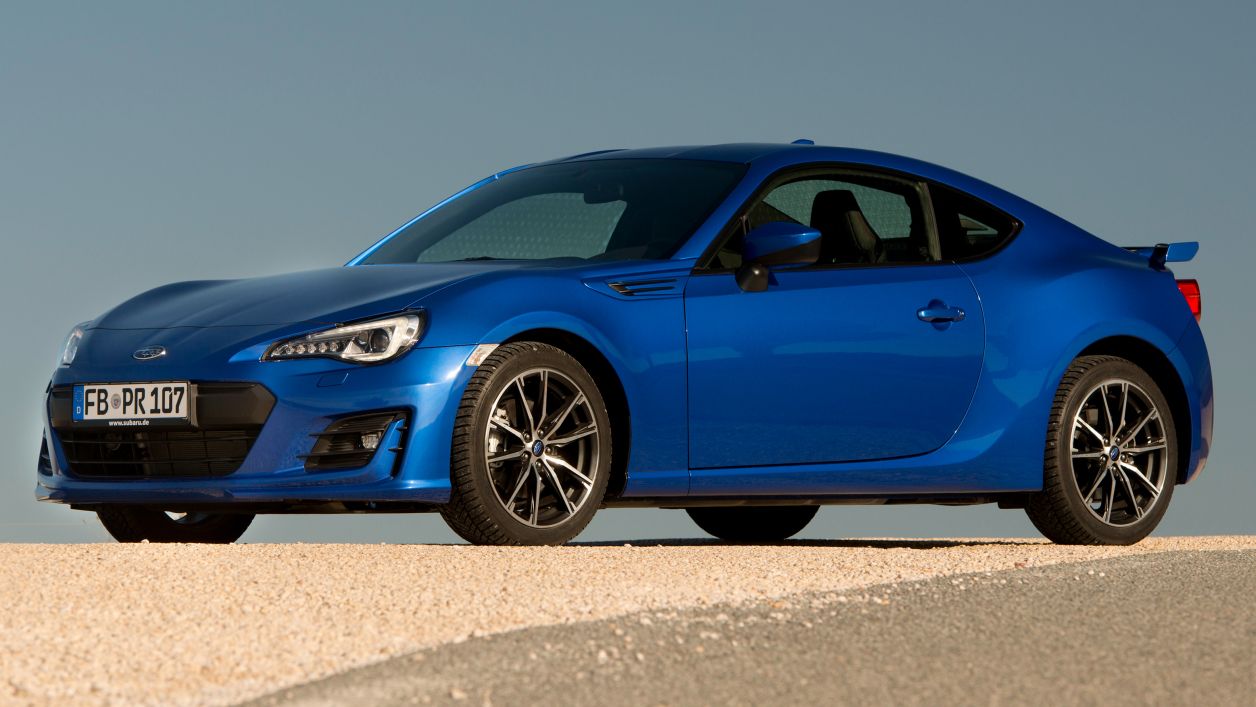
9. **Subaru EJ22 2.2L Flat-4**The Subaru EJ22 2.2L engine represents one of the most notably resilient powerplants ever to emerge from the Japanese automaker. Primarily integrated into early 1990s models such as the Subaru Legacy, Impreza, and certain initial Outback iterations, the EJ22 quickly established a formidable reputation for being virtually unkillable. One of the most distinguishing characteristics of the EJ22 is its remarkable resistance to performance degradation over time; many of these engines continue to deliver strong power output even after comfortably surpassing the 300,000-mile mark. The distinctive flat-four layout inherently keeps the engine’s center of gravity low, a design advantage that significantly contributes to its exceptionally smooth operation and minimal vibration throughout its long service life.
While the EJ22 may not be considered a powerhouse by contemporary standards, its consistency and steadfast reliability are truly exceptional. It is not prone to sudden losses of compression or unexpected valvetrain issues, and its timing belt-driven overhead cam setup is recognized for both its robust reliability and its straightforward serviceability. Valve clearances tend to hold up remarkably well over extended periods, and even older engines frequently pass compression tests with highly satisfactory results, underscoring their inherent internal integrity. For an engine of its compact size, the EJ22 exhibits remarkable durability, particularly under stressful operating conditions. Numerous Subaru owners have extensively used their EJ22-powered vehicles in harsh winter environments, demanding mountain driving, and rigorous off-road excursions, yet the engines consistently continue to start reliably in all conditions. Cold weather does not typically faze the EJ22, and instances of overheating are rare when the cooling system is diligently maintained in optimal condition.
Furthermore, the EJ22 engine is characterized by low oil consumption, minimal blow-by, and consistent long-term fuel economy, all indicative of a well-engineered and enduring unit. Interestingly, many of the vehicles originally equipped with the EJ22 are no longer on the road due to issues such as chassis rust or transmission failure, rather than the engine itself failing. In fact, many dedicated Subaru enthusiasts actively seek out old EJ22 blocks specifically for swapping into newer chassis, a testament to their unwavering confidence that this engine will continue to run dependably for many years to come. What truly renders the EJ22 impressive is its effortless and consistent delivery of steady performance, even at exceptionally high mileage, avoiding the common aging symptoms observed in many other small-displacement engines.
Car Model Information: 2023 Subaru Legacy Limited
Name: Subaru Legacy
Caption: 2020 Subaru Legacy (United States)
Manufacturer: Subaru
Aka: Isuzu Aska
Production: 1989–2020 (worldwide),1989–2025 (North America)
Assembly: Ōta, Gunma
Class: Mid-size car
BodyStyle: Sedan (automobile)
Layout: Front-engine, front-wheel-drive
ModelYears: 1990–2025 (North America)
Categories: 1990s cars, 2000s cars, 2010s cars, 2020s cars, All-wheel-drive vehicles
Summary: The Subaru Legacy (Japanese: スバル・レガシィ, Hepburn: Subaru Regashi) is a mid-size car built by Japanese automobile manufacturer Subaru from 1989 to 2025. The maker’s flagship car, it is unique in its class for offering all-wheel drive as a standard feature, and Subaru’s traditional boxer engine.
In 1996, a variant of the Legacy with heightened suspension called the Legacy Outback was introduced to compete in the burgeoning sport-utility vehicle class, and proved to be a sales success for Subaru. The Outback line was split into its own model in 2008, known as the Subaru Outback.
As of 2008, 3.6 million Legacy models have been built since its 1989 introduction.
Production of the Legacy ended in Japan in June 2020, with the sixth-generation Legacy being the last model produced and marketed in Japan. Subaru of America announced in an internal email that 2025 will be the last model year for the Subaru Legacy. The Subaru Outback will remain in production, after being the company’s top selling model in 2023.
The Legacy was sold as the Liberty in Australia out of deference to Legacy Australia, an organisation dedicated to caring for the families of military service veterans.
Get more information about: Subaru Legacy
Buying a high-performing used car >>>
Brand: Subaru Model: Legacy
Price: $21,950 Mileage: 9,667 mi.

10. **BMW M54 3.0L Inline-6**The BMW M54 3.0L inline-six engine, prominently featured in iconic models such as the E46 330i, E39 530i, and early E60 5-Series, stands as one of the last truly great naturally aspirated inline-sixes from BMW before the automotive industry transitioned towards widespread turbocharging. Produced between 2000 and approximately 2006, the M54 garnered significant acclaim for its exceptional smoothness, linear power delivery, and sophisticated mechanical refinement. While BMW, as a brand, has not always been universally associated with long-term reliability in all its historical offerings, the M54 notably represents a significant exception to this perception, consistently demonstrating remarkable longevity.
With diligent and proper maintenance, these M54 engines are perfectly capable of reaching well over 300,000 miles while continuing to deliver strong, responsive performance. It is one of the distinct engines where achieving high mileage does not automatically equate to a noticeable decline in either drivability or the inherent character of the vehicle. Although the cooling system components, particularly those made of plastic, do require attentive and proactive maintenance due to their tendency to degrade with age, the core engine itself possesses an inherent capability to withstand wear far better than many of its contemporaries. Routine maintenance, including consistent oil changes, the use of high-quality fluids, and timely cooling system replacements every 80,000 to 100,000 miles, typically constitutes all that is necessary to maintain the M54 in its optimal operating condition.
From a performance standpoint, the M54 continues to impress even in vehicles that have accumulated substantial mileage. The throttle response remains notably sharp, the engine revs freely and smoothly through its range, and it provides a level of mechanical refinement and engaging driving experience that modern turbocharged engines often struggle to emulate. BMW’s original engineering and tuning philosophy for the M54 focused intensely on achieving smooth torque delivery and a balanced power output. This strategic design ensures that the engine rarely feels strained or overworked, whether it is effortlessly cruising at low RPMs or enthusiastically climbing to its redline. This inherent operational flexibility plays a crucial role in mitigating the kind of wear that more high-strung engines typically accumulate over time.
Even at very high mileage, the M54 remarkably retains its distinctive character, and many drivers are genuinely surprised by how ‘new’ their cars continue to feel mechanically, a testament to the engine’s enduring quality. It is not uncommon for automotive enthusiasts to specifically seek out and acquire older BMW models precisely because they are powered by the M54. Whether it is intended for a daily commute or for enjoyable weekend drives, this engine consistently provides a rewarding and reliable driving experience that underscores its enduring legacy in the automotive world.
Car Model Information: 2022 BMW 330 i
Name: BMW 3 Series
Manufacturer: BMW
Production: 1975–present
Class: Compact executive car
Predecessor: BMW 02 Series
Categories: 1970s cars, 1980s cars, 1990s cars, 2000s cars, 2010s cars
Summary: The BMW 3 series is a line of compact executive cars manufactured by the German automaker BMW since May 1975. It is the successor to the 02 series and has been produced in seven generations.
The first generation of the 3 Series was only available as a 2-door saloon; the model range expanded to include a 4-door saloon, 2-door convertible, 2-door coupé, 5-door estate, 5-door liftback (“Gran Turismo”; discontinued in 2019) and 3-door hatchback body styles. Since 2013, the coupé and convertible models have been marketed as the 4 Series; these styles no longer being included in the 3 Series.
The 3 Series is BMW’s best-selling model line, accounting for around 30% of the BMW brand’s annual total car sales, and has won numerous awards throughout its history. The M version of the 3 series, M3, debuted with the E30 M3 in 1986.
Get more information about: BMW 3 Series
Buying a high-performing used car >>>
Brand: BMW Model: 330i
Price: $31,980 Mileage: 23,209 mi.
Read more about: Beyond the Horsepower: Unveiling 15 Car Brands with Engines Built for the Long Haul
Ultimately, the journey through these ten remarkable engines underscores a pivotal truth for consumers: engine longevity is not merely a matter of chance, but a direct result of meticulous engineering and a commitment to durable design. These powerplants, whether a workhorse V8, a refined inline-six, or an unyielding diesel, stand as powerful reminders that selecting a vehicle with a proven, robust engine can profoundly impact long-term ownership satisfaction. They offer not just transportation, but enduring reliability, proving that with the right design and consistent care, your vehicle’s heart can keep beating strongly for hundreds of thousands of miles, defying obsolescence and delivering dependable performance for years to come. Investing in a car with one of these engines means investing in a future of confident, long-lasting journeys.

